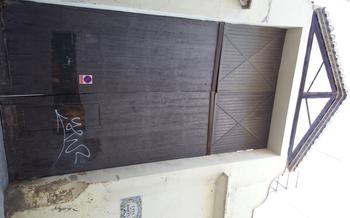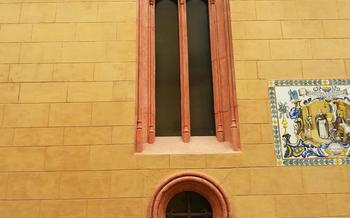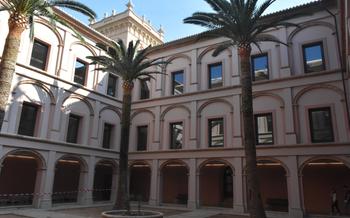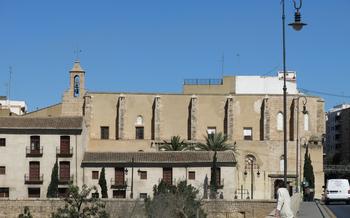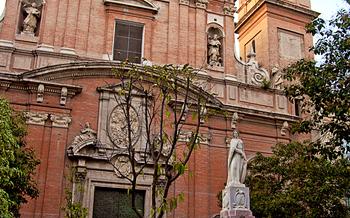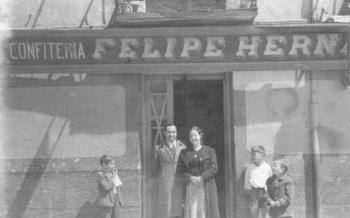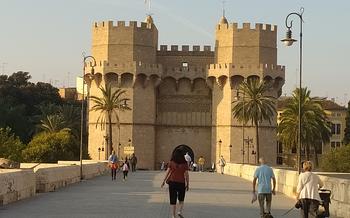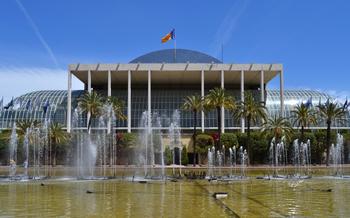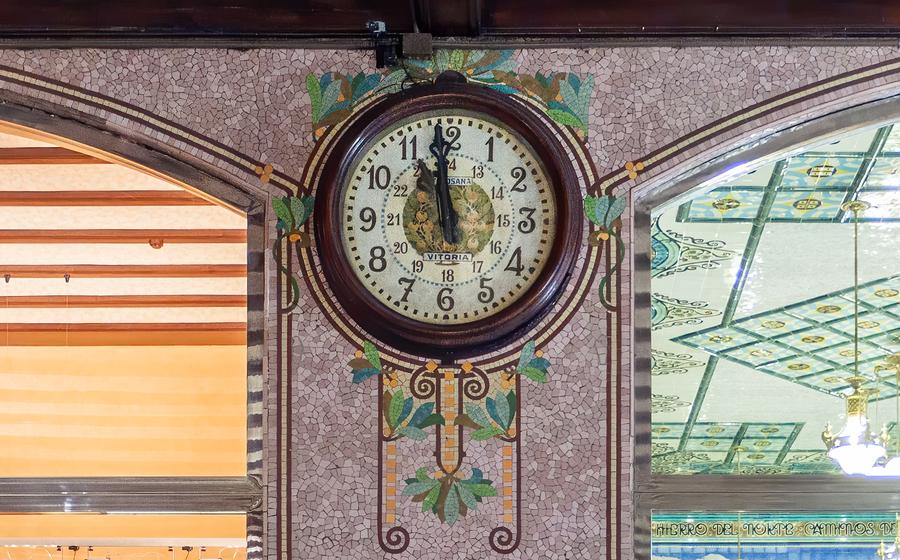
Museo del Corpus – Casa de las Rocas
- History of the Museo del Corpus – Casa de las Rocas
- Location and Hours of Operation
- The Corpus Christi Procession
- Exploring the Museum's Collection
- The Casa de las Rocas
- The Chapel of San Juan de Ribera
- The Refectory
- The Kitchen
- The Archives
- The Library
- The Shop and Café
- Accessibility for Visitors with Disabilities
- Insider Tip
History of the Museo del Corpus – Casa de las Rocas
The Museo del Corpus – Casa de las Rocas, located in the heart of Valencia, Spain, is a captivating cultural institution that unveils the rich history of the city's Corpus Christi celebrations. Housed within the historic Casa de las Rocas, a magnificent 15th-century palace, the museum offers a comprehensive journey through the centuries-old tradition of the Corpus Christi procession, one of Valencia's most iconic festivals.
The Casa de las Rocas, with its intricate Gothic architecture and grand halls, has served as a testament to the city's heritage since its construction in the late 15th century. Originally intended as a residence for the noble Roca family, the palace became the headquarters of the Corpus Christi Confraternity in 1578, entrusted with organizing the annual procession.
In 1970, the Casa de las Rocas underwent a meticulous restoration, transforming it into a museum dedicated to preserving and showcasing the legacy of the Corpus Christi tradition. Today, the Museo del Corpus – Casa de las Rocas stands as a vibrant hub of cultural exploration, inviting visitors to delve into the history, symbolism, and artistry that define this cherished Valencian festival.
Location and Hours of Operation
The Museo del Corpus – Casa de las Rocas is strategically located in the historic center of Valencia, Spain. It is situated on Calle del Corpus Christi, 1, just a short walk from the city's main square, Plaza de la Reina. The nearest metro station is Colón, which is served by Line 3 and Line
The museum is open to the public from Tuesday to Sunday, with varying hours depending on the time of year. During the summer months (June to September), the museum is open from 10:00 am to 2:00 pm and from 4:00 pm to 8:00 pm. In the winter months (October to May), the museum is open from 10:00 am to 2:00 pm and from 4:00 pm to 7:00 pm. The museum is closed on Mondays and on certain holidays.
The Corpus Christi Procession
The Museo del Corpus is intimately linked to the Corpus Christi procession, one of the most important religious celebrations in Valencia. The procession has its roots in the 14th century, when it was established to commemorate the miracle of the Holy Chalice, which is believed to have saved the city from a plague.
The procession takes place every year on the second Sunday after Pentecost. It features dozens of elaborately decorated floats, each representing a different scene from the Bible. The floats are carried through the streets of Valencia by hundreds of people wearing traditional costumes.
The Museo del Corpus plays a vital role in the procession, as it is responsible for creating and maintaining the floats. The museum's collection includes over 300 pieces of art and artifacts related to the procession, including vestments, banners, and sculptures.
During the procession, the museum's floats are displayed in front of the Cathedral of Valencia. After the procession, the floats are returned to the museum, where they are carefully restored and prepared for the following year's celebration.
The Corpus Christi procession is a spectacular event that draws thousands of visitors to Valencia each year. It is a unique opportunity to experience the city's rich religious and cultural heritage.
Exploring the Museum's Collection
The Museo del Corpus – Casa de las Rocas houses a rich and diverse collection of artifacts, artwork, and documents related to the history of the Corpus Christi procession and the city of Valencia.
The permanent exhibits focus on the history, symbols, and traditions of the Corpus Christi procession. Visitors can see intricate monstrances, elaborate costumes, and other objects used in the procession, as well as learn about the significance of the event in Valencian culture.
The museum also hosts temporary exhibits on a variety of topics related to the history and culture of Valencia. These exhibits may feature works of art, historical documents, or objects from everyday life.
Highlights of the collection include:
- A monstrance from the 15th century, considered one of the finest examples of Valencian goldsmithing.
- A collection of paintings by the Valencian artist Joaquín Sorolla y Bastida, depicting scenes from the Corpus Christi procession.
- A series of tapestries from the 16th century, illustrating the history of the city of Valencia.
- A collection of documents and manuscripts related to the history of the Corpus Christi procession.
The Casa de las Rocas
The Casa de las Rocas, or House of Rocks, is a historic building located within the Museo del Corpus – Casa de las Rocas. It was built in the 15th century as the residence of the canons of the Valencia Cathedral. The building's most striking feature is its exterior, which is adorned with intricate carvings of rocks and shells. These carvings, which are unique to the building, give it its name and are believed to symbolize the strength and endurance of the Catholic Church.
The Casa de las Rocas has undergone several renovations and additions over the centuries. In the 16th century, a Gothic-style chapel was added to the building, and in the 18th century, the building was expanded to include a new wing. The building served as the residence of the canons until the early 19th century when it was converted into a museum.
Today, the Casa de las Rocas houses a collection of religious art and artifacts from the Valencia Cathedral. The collection includes paintings, sculptures, tapestries, and liturgical objects. The building also houses the archives of the Valencia Cathedral, which contain a wealth of historical documents and manuscripts.
The Chapel of San Juan de Ribera
The Chapel of San Juan de Ribera16th century, the chapel is named after the saint who served as Archbishop of Valencia from 1569 to 16Archbishop Ribera, a prominent figure in the Counter-Reformation, played a key role in shaping the religious and cultural landscape of the city.
The chapel's architectural design reflects the Übergangsstil, a transitional style that combines Gothic and Renaissance elements. Its striking interior features a remarkable altarpiece, considered one of the finest examples of Valencian Renaissance art. The altarpiece, which portrays scenes from the life of Christ and the Virgin Mary, was crafted by renowned Valencian artists such as Paolo de San Leocadio and Francesco Pagano.
The chapel also houses several other significant artworks, including sculptures, paintings, and religious artifacts. Visitors can admire the intricate carvings of the choir stalls, which depict scenes from the Old and New Testaments. The chapel's collection of paintings includes works by prominent artists such as Juan de Juanes and Francisco Ribalta.
The Chapel of San Juan de Ribera is a sacred space that exudes an atmosphere of tranquility and spirituality. It serves as a reminder of the deep-rooted Catholic faith that has shaped the history and culture of Valencia.
The Refectory
The refectory, or dining hall, of the Museo del Corpus – Casa de las Rocas is a magnificent example of Gothic architecture. Built in the 15th century, it features a vaulted ceiling with intricate ribwork, as well as large windows that flood the space with natural light.
In its original function, the refectory was used by the canons of the nearby cathedral as a place to eat and socialize. Today, it serves as a multi-purpose space for the museum, hosting temporary exhibitions, conferences, and other events.
The refectory's impressive size and elegant design make it a popular venue for various events. Its acoustics are particularly well-suited for musical performances, and it has been used for concerts, recitals, and other musical events.
The refectory is also a popular place for weddings and other special events. Its unique atmosphere and beautiful architecture provide a stunning backdrop for any celebration.
The Kitchen
The kitchen of the Museo del Corpus – Casa de las Rocas is a testament to the culinary history of Valencia. Built in the 15th century, the kitchen is one of the oldest preserved kitchens in the city. It was used by the monks of the Corpus Christi College to prepare meals for the community. The kitchen is a large, open space with a central fireplace and a series of ovens and work surfaces. It is equipped with a variety of traditional cooking utensils, including copper pots and pans, wooden spoons, and ceramic bowls.
The kitchen is not only a historical artifact but also a working space. It is used to prepare food for events and workshops held at the museum. Visitors can often catch a glimpse of the kitchen staff preparing traditional Valencian dishes, such as paella and horchata. The kitchen is also available for rent for private events, such as cooking classes and team-building activities.
Today, the kitchen is a popular attraction for visitors to the Museo del Corpus – Casa de las Rocas. It offers a unique glimpse into the daily life of the monks who lived in the college and the culinary traditions of Valencia.
The Archives
The Museo del Corpus – Casa de las Rocas houses a rich and extensive archive that preserves a wealth of historical documents and manuscripts related to the history of Valencia and the Corpus Christi festival. These documents include medieval manuscripts, papal bulls, account books, and other records that provide valuable insights into the city's past and the development of the Corpus Christi tradition.
The archives are particularly significant for their collection of documents related to the Corpus Christi procession. These documents include detailed descriptions of the floats, costumes, and music used in the procession, as well as records of the expenses incurred in organizing the event. They offer a glimpse into the elaborate preparations and the deep devotion that went into creating this spectacular religious spectacle.
Access to the archives is restricted to researchers and scholars who have been granted permission by the museum's administration. However, visitors can still learn about the archives and its contents through guided tours and temporary exhibitions that showcase some of the most interesting and significant documents from the collection.
The Library
The Museo del Corpus – Casa de las Rocas houses a magnificent library that contains a wealth of knowledge and historical documents related to the Corpus Christi festival and the history of Valencia. Founded in 1954, the library's collection boasts over 10,000 volumes, including rare books, manuscripts, and incunabula.
Among the highlights of the collection are several beautifully illuminated manuscripts from the 15th and 16th centuries, which showcase the exquisite artistry and craftsmanship of the period. These manuscripts provide valuable insights into the religious and cultural traditions of Valencia during the Renaissance.
The library also houses a significant collection of books and documents related to the history of the Corpus Christi procession, including detailed accounts of the procession's origins, evolution, and symbolism. These documents offer a unique perspective on the deep-rooted traditions and religious beliefs of the Valencian people.
Researchers and scholars from around the world visit the library to access its rich collection of materials. The library staff is dedicated to preserving and promoting the cultural heritage of Valencia and provides assistance to researchers and visitors alike.
The Shop and Café
After exploring the museum's rich collection, visitors can take a break at the on-site shop and café. The shop offers a variety of souvenirs and gifts, including books, postcards, and replicas of the museum's artifacts. Visitors can also purchase traditional Valencian handicrafts and products, such as ceramics, textiles, and food items.
The café provides a relaxing space to enjoy a cup of coffee or tea, accompanied by a selection of pastries, sandwiches, and light meals. Visitors can sit indoors or outdoors on the café's terrace, which offers beautiful views of the museum's courtyard and the surrounding gardens.
The shop and café are conveniently located near the museum's entrance, making them easily accessible for visitors. Both the shop and café are wheelchair accessible, and the staff is happy to assist visitors with any special needs or requests.
Accessibility for Visitors with Disabilities
The Museo del Corpus – Casa de las Rocas is committed to providing an accessible and enjoyable experience for all visitors, including those with disabilities. The museum is wheelchair accessible, with ramps and elevators throughout the building. Accessible restrooms are also available.
The museum offers a variety of accessible tours and programs. Guided tours in sign language are available upon request. The museum also offers touch tours for visitors who are blind or visually impaired. These tours allow visitors to experience the museum's collection through touch and sound.
For visitors with disabilities who require assistance, the museum has a dedicated team of staff members who are happy to help. Visitors can contact the museum in advance to arrange for assistance.
Insider Tip
To fully appreciate the beauty of the Museo del Corpus – Casa de las Rocas, plan your visit for a sunny day when the natural light illuminates the intricate details of the exhibits and architecture. Don't miss the hidden gem of the museum, the small chapel located behind the refectory, which houses stunning frescoes and a serene atmosphere. For photography enthusiasts, the best shots can be captured during the golden hours of sunrise and sunset, when the warm light casts a magical glow on the museum's exterior and interior.

